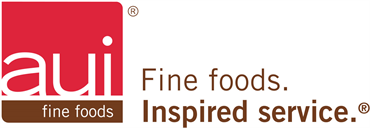- Catalog |
-
My Cart - Quick Order
|
The Cocoa Climate Crisis
Can Collaborative Efforts Save The Precious Cocoa Bean?
December 21, 2015
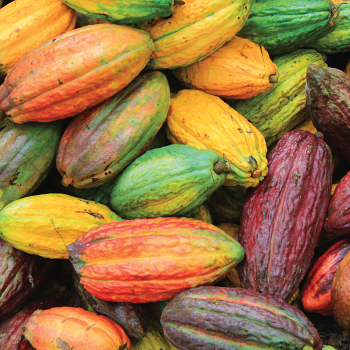
A rainbow of cocoa pods.
Trade secrets are some of the most highly guarded secrets in the world. I recently picked up an article that actually compared the vault that shelters Colonel Sanders’ Original Recipe Chicken to a Mission Impossible style vault, and in my mind all I could picture was Catherine Zeta Jones in Entrapment dodging and ducking under lasers to get to the chicken recipe. Corporations will take drastic measures to protect their trademark secrets, but recently in the chocolate industry we’ve seen quite the opposite.
Cocoa is in trouble, and the results could have disastrous effects on the chocolate industry’s growth. Companies have a shared goal: keep the cocoa plant thriving, because without it they can’t sell their product.
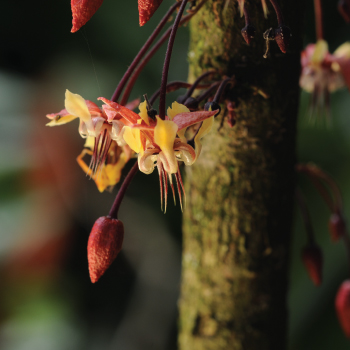
A budding cocoa plant.
The cocoa plant has been affected by pests and disease, and now climate change threatens to compromise the plant. Over 50% of the world’s cocoa is grown in Western Africa, mainly in Ghana and Côte d’Ivoire. A study released by CIAT (International Center for Tropical Agriculture) forecasts that by 2050, the climate in Western Africa will become unsuitable for the cocoa plant, due to a rise in temperature. It is predicted that the temperature will rise a whopping 2° Celsius (3.6° Fahrenheit). The cocoa plant is a very difficult crop to manage, and demands specific environmental factors in order to flourish. A massive rise in temperature like this would make the environment unstable for cocoa, so billion dollar companies are doing whatever they can to save the plant.
A collaborative effort between chocolate retail giant MARS, the USDA, and multiple universities and research institutes, resulted in the fully mapped cocoa genome. You can actually go their website and download the entire cocoa genome yourself! MARS hopes that by making the genome public, researchers around the world will be able to use it as a tool to create more efficient cocoa plant breeds by using selective breeding in the laboratory.
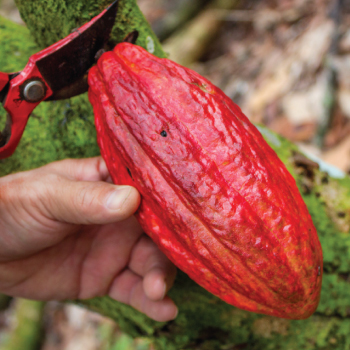
A cocoa pod being harvested.
Efforts are also being made in other countries to promote and enhance future cocoa growing. Continents like South America and Asia are predicted to have more suitable foreseeable environments to grow cocoa, as temperatures in these areas rise in the future. The cocoa plant is already cultivated heavily in these regions, but researchers hope that growing can be stepped up in order to make up for the future lack of growth in Western Africa. However, an effort like that requires money. Farmers need training to learn how to keep cocoa plants sustainable, while also maintaining their coffee bean plants, which could become less viable as temperature rises. Nicaragua and El Salvador reportedly plan to invest in the cocoa industry, but chocolate manufacturers need to start coughing up serious cash in order to assist with these endeavors and protect their product.
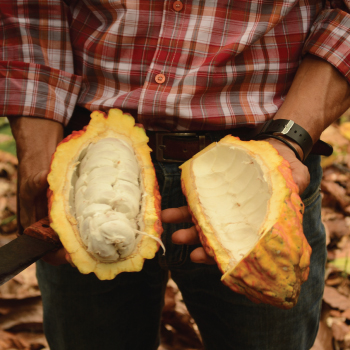
The interior of a freshly harvested cocoa pod. Many thanks to AUI's cocoa partner in South America for providing these beautiful cocoa plantation images!
Nestlé is one retail company that has been investing heavily in helping cocoa farms and plantations adapt to climate change. They report that they have trained over 21,000 cocoa farmers worldwide, including over 9,000 in Western Africa, in “more efficient and sustainable growing techniques, such as how to prune trees and ferment and dry beans more effectively.” Hershey even plans to invest 10 million by 2017, to improve cocoa supply and labor in West Africa.
As the saying goes, “It takes a village,” and that is exactly what we are seeing as chocolate companies race to find a long term solution to the cocoa problem.
What do you think? Share your own thoughts and opinions on the cocoa crisis and the potential impact to the industry by emailing us at PastryTeam@auifinefoods.com or visit our Facebook page. Stay tuned for more information as we dive deeper into the cocoa industry and climate crisis.
About the Author
Danielle Romano graduated from Towson University with a degree in English Literature and Writing. Since then she has put her knowledge of grammar and syntax to good use, working as an intern and freelance editor for a multitude of magazines and online newspapers. Danielle has also worked in the medical field for a number of years, but recently left medicine behind to join AUI as an Executive Assistant; she claims she did it for the chocolate.
